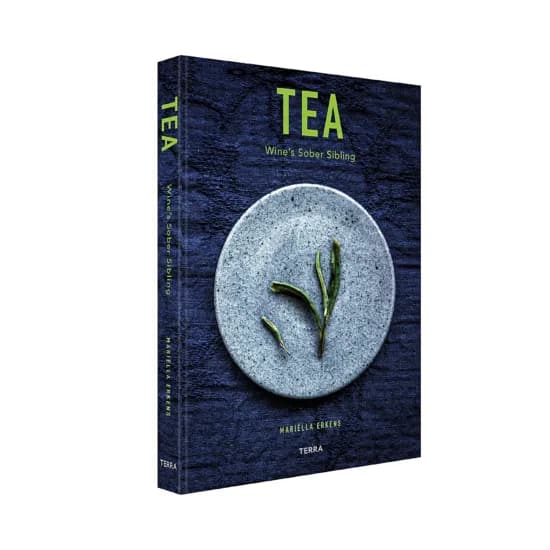[[{“value”:”
BY TANYA NANETTI SENIOR ONLINE CORRESPONDENT
Photos courtesy of Mariëlla Erkens
Before my career as a specialty-coffee barista, I wasn’t really into tea. Over time, I became curious about it. After all, tea was not so different from coffee, and I couldn’t understand why it was still so much ignored, even by baristas and cafés so attentive to everything else.
My curiosity reached another level a couple of months ago, when I had the chance to attend a tea ceremony in Malaysia. There, trying three teas so different from each other, I realized how much there was to know about tea, and I had no idea where to start.
It was at that moment that I remembered seeing Tea: Wine’s Sober Sibling, a 2021 book written by Dutch tea sommelier Mariëlla Erkens, on a friend’s bookshelf. I had to read it!
Opening Tea: Wine’s Sober Sibling
Once found a copy, I delved into the preface and was immediately captivated by the introductory lines: “’Why would you want to serve tea with food?’” It is a question I am often asked, and it is usually followed by, “After all, there is nothing better than wine to pair with food. That is what we have done for centuries.”
This interesting premise is followed by an overview of what the book will be about. This handbook is written for everyone: beginners, experienced tea lovers, tea connoisseurs, chefs and sommeliers, food lovers, and anyone looking for the best non-alcoholic alternatives to wine. It includes a series of experiments, tips, and examples to help tea novices. There are more than 60 food recipes. Each is accompanied by tea tips in three categories: budget teas, specialty teas, and high-end teas.
Comparisons: Tea vs. Wine
The book begins with an in-depth comparison with wine, many people’s preferred beverage for food pairings.
Terroir, names, and production are among the elements that bring tea and wine together; the two beverages share many similarities. For example, have you ever noticed how they both cleanse the mouth after each bite, and how well they blend with food, producing harmony? And of course there are a few differences, especially with regard to wine’s acidity and tea’s astringency.
Pairing Basics
At this point, the fundamental question is: Why choose to pair tea?
For one, tea intensifies the flavors of food! This is partly because of the temperature of the tea, but mostly because of the many aromatic and taste components of the tea that react with those of the food.
But of course, to start thinking about pairing you need to know more about tea. An important chapter called “The Basics“ addresses them all, from what is properly called tea (vs. herbal infusions), to the different varieties of tea. Mariëllanext describes the processing of leaves for the different types of tea: green, yellow, white, oolong, black, post-fermented. She describes how to use the right water, and how to steep the tea in the classic Eastern style, in the Western way, or as a strong cold brew that can be served diluted, hot, cold, or iced.
Testing, Tasting
In the next chapter, “Taste and Flavor,“ Mariëlla begins with explaining how tasting works. Aroma charts and flavor wheels describe everything about aroma, intensity, texture, and all the basic characteristics needed to begin analyzing food and tea to create a good pairing. (This works not only with tea, but also with beer, wine, and coffee!)
Here, a simple but effective test involving tasting a cracker while sipping wine and tea shows the basics of how a beverage can affect food—and vice versa.
Check out part two of this review tomorrow, where we’ll delve further into Tea: Wine’s Sober Sibling with info on tea pairings, cooking techniques, and more.
ABOUT THE AUTHOR
Tanya Nanetti (she/her) is a specialty-coffee barista, a traveler, and a dreamer. When she’s not behind the coffee machine (or visiting some hidden corner of the world), she’s busy writing for Coffee Insurrection, a website about specialty coffee that she’s creating along with her boyfriend.
Subscribe and More!
Out now: It’s the February + March 2024 issue of Barista Magazine! Read it for free with our digital edition. And for more than three years’ worth of issues, visit our digital edition archives here.
You can order a hard copy of the magazine through our online store here, or start a subscription for one year or two.
“}]]


